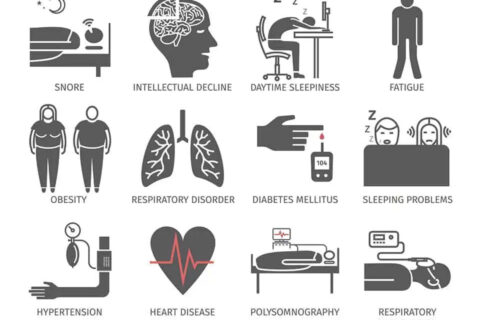Exploring Sleep Stages and the Importance of Each Stage

Not all sleep is created equal, as the sleep cycle comes in stages. Each stage serves an important function when it comes to maintaining human health. Each stage allows the brain and body to recover from the day, heal from illness and/or injury, and build healthy new cells.
Let’s look at the four sleep stages and explore the significance of each.
NREM Stage 1
Length – 1 to 7 minutes
Sleep Stage 1, also known as N1 begins when a person initially falls asleep. It’s a short stage that typically lasts for only a few minutes. Afterward, the individual moves into the next phase.
The body begins to relax and prepare itself for a night of sleep during this phase, however, the process of relaxing the body and brain doesn’t end in this phase.
NREM Stage 2 – Light Sleep
Length – 10 to 25 minutes
Sleep Stage 2, also called N2, occurs when the body relaxes further and the brain starts progressing into the sleep cycle. During this stage, the body’s temperature drops slightly, the muscles relax, and organs like the heart and lungs slow down in their processes. The brain also slows down during this phase and eye movement decreases, then stops.
Typically, a person spends about half of their sleeping time in this phase.
NREM Stage 3 – Deep Sleep
Length – 20 to 40 minutes
Sleep Stage 3, aka N3, is what’s known as deep sleep. During this phase, the muscle tone, pulse, and respirations decrease and the body continues to relax in preparation for REM sleep.
During N3, the brain follows noticeable patterns called delta waves, which play an important role in sleep’s ability to restore the body and mind. In addition, this phase is essential for immune regulation and an array of other processes that keep the human body healthy.
REM Stage 4 – Dream Phase
Length – 10 to 60 minutes
Sleep Stage 4, or REM sleep, refers to the stage in which dreams manifest. The brain’s activity increases, but to keep the body from acting out one’s dreams, atonia (temporary paralysis) sets in. Atonia affects most of the body during the REM phase, other than the involuntary muscles that keep the body breathing and the heart beating.
In addition, the eyes are still able to move, which is why REM stands for “rapid eye movement,” as during this phase, the eyes dart back and forth under the eyelids.
REM is incredibly important for cognitive functioning, memory, and other components of brain and body health.
For the best sleep quality, a person needs to complete each sleep stage, sometimes several times each night. To learn more about the nature of sleep and how it affects human health, stay tuned for future blog posts.


